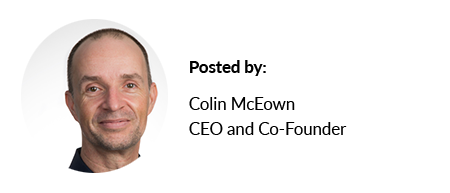Unlike most Software as a Service (SaaS) providers, we don’t license our software on a per-user basis.
While it may seem crazy to fly in the face of common practice, particularly when some of those common practitioners include Microsoft and Salesforce, there are several compelling reasons why we think unlimited user licenses is the only way to go.
1. It’s the best model for you
Occasionally I wonder if we’ve got it backwards and should be doing what everyone else is doing, so the other day I ran some numbers.
First, I had a close look at similar SaaS systems:
- Microsoft Dynamics: $60-250 per user per month, depending on the edition
- Salesforce: $35 to $360
- Sugar CRM: $40 to $150
- Sage CRM: $25 to $55
Sounds great, doesn’t it?
Naturally, our minds immediately go the lowest figures in those ranges, wishfully thinking that the lowest price will still provide us with a feature set that we can live with. Then we start working out the minimal set of users we can get away with. 100 users? 50? 20? Who should we cut out of the loop?
Then I ran the numbers on Consultation Manager.
On average, our Enterprise customers pay just $12.75 per user, per month.
Not only is this far lower than the lowest price points above, it’s not for a cut-down, feature restricted, entry level version of our software. It’s for unlimited users, unlimited document storage and unlimited projects (you’ll notice that we use the word ‘unlimited’ a lot).
2. It’s the best model for us
When we first brought Consultation Manager to market in 2005, our motivation for the unlimited user model was admittedly a bit different. As the first provider of a cloud-based stakeholder engagement system, we thought that the best way for us to grow our business would be to expose Consultation Manager to as many people as possible as quickly as possible. Unlimited users was a key part of this strategy and, as a result, we grew very rapidly and primarily by word of mouth. Limiting user accounts would have stifled this growth.
A pleasant surprise for us was that organisations started using our software in departments and for applications that we hadn’t foreseen. Change management, sales, media relations, government relations and human resources teams also saw the benefit in sharing stakeholder information organisation-wide.
With tens of thousands of users now using our software, we believe that unlimited users was exactly the right decision to make and we have no plans to change it.
3. Knowledge Sharing is about Knowledge Sharing
Finally, our philosophy is that knowledge sharing software can only be effective if knowledge is truly shared across your organisation.
Limiting user access to your core repository of corporate knowledge is about the worst thing you can do if your goals include increasing collaboration and transparency, eliminating ‘information silos‘ or getting past the ‘key person problem’.
Having to justify additional expenditure every time you want to expose a new team member to critical information is a barrier that we think you could do without.
Finally
Everyone loves a win-win scenario. Unlimited users ensures you get the best out of your knowledge sharing platform while paying the least for it, helps us to spread the word and, most importantly, helps you protect your relationships with your stakeholders.
Hang on, that’s a win-win-win.

Colin McEown, CEO
Learn how other organisations manage their stakeholder and community engagement data. Download the free information sheet for your industry.

RELATED READING
Notes from the CEO: Data, Data, Everywhere
Notes from the CEO: Information Silos and the Key Person Problem
7 Benefits (and some Common Pitfalls) of Stakeholder Databases
DIY or Buy? How to Choose a Stakeholder Management System

